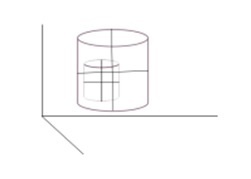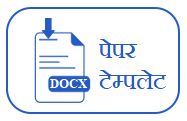Applications of Matrices in Modern Scenario

DOI:
https://doi.org/10.54060/JASE/001.01.003Keywords:
Matrix theory, Rectangular array, linear equation, graphic designing, cryptographyAbstract
In the modern world, matrices are considered to be of extreme use as they can be applied in fields like Chemistry, Physics, Economics, Construction, Finance, etc. In this work, the key applications empowered by the framework hypothesis in two significant fields of interest in graphic designing, in particular video game designing. The paper centers on how matrices and their operations play a significant role in designing and manipulating the structure on a screen to make it realistic. Among the significant applications in video games, it has a significant role in Adobe Photoshop how we put our structures in suggested dimensions and move according to our comfort in it and this is possible because of matrices. The study brings up the significant commitment made by cryptography, and the security process it carries with it so that no other person in between can decode the message and the message is delivered safely to the intended person. The significance pretended by grids in addressing and handling advanced pictures is portrayed by a few illustrative applications. This paper covers many other applications in matrices of how it is used in chemistry, physics, medical science, geology, economics, and many more.
Downloads
References
D. R. Camp and P. Y, “Secret codes with matrices,” Mathematics Teacher, vol. 78, no. 9, pp. 676–680, 1985.
A. Baker, Matrix Groups. London, England: Springer London, 2002.
R. A. Beauregard and J. B. Fraleigh, A First Course In Linear Algebra: with Optional Introduction to Groups, Rings, and Fields. Boston: Houghton Mifflin, 1973.
L. I. Schiff and J. Bandhyopadhyay, “Buy Quantum Mechanics book online at low prices in India,” Amazon.in. [Online]. Available: https://www.amazon.in/Quantum-Mechanics-Leonard-I-Schiff/dp/1259062864. [Accessed: 06-Dec-2020].
A. Cayley, “A memoir on the theory of matrices,” Philosophical Transactions of the Royal Society of London, Volume 148, Pages 17-37.
C. Arthur, The collected mathematical papers of Arthur Cayley. Charleston, SC: BiblioLife, 2009.
H. Anton and C. Rorres, “Elementary linear algebra applications version.” 1994.
S. Abraham, Elementary cryptanalysis a, a mathematical approach. Mathematical Association of America, mathematical library, 1966.
A. G. Konheim, Cryptography: A Primer, First Edition; Third Printing. Nashville, TN: John Wiley & Sons, 1981.
T. S. Blyth and E. F. Robertson, Basic linear algebra, 2nd ed. Guildford, England: Springer, 2002.
H. Anton, “Elementary Linear Algebra”, John Wiley & Sons, July 2019, ISBN: 978-1-119-62569-8.
X. Huang and S. G. Krantz, “On a problem of Moser,” Duke Math. J, vol. 78, pp. 213–228, 1995.
O. D. Kellog, “Harmonic functions and Green’s integral,” Trans. Amer. Math. Soc, vol. 13, pp. 109–132, 1912.
K. M. Rasulov and B. F. Fatulaev, Differ. Equ., vol. 38, no. 2, pp. 274–278, 2002.
“Doklady Mathematics,” Springer.com. [Online]. Available: https://www.springer.com/journal/11472. [Accessed: 06-Dec-2020].
“Introduction to Linear Algebra, 5th Edition,” Mit.edu. [Online]. Available: https://math.mit.edu/~gs/linearalgebra/. [Accessed: 06-Dec-2020].





























